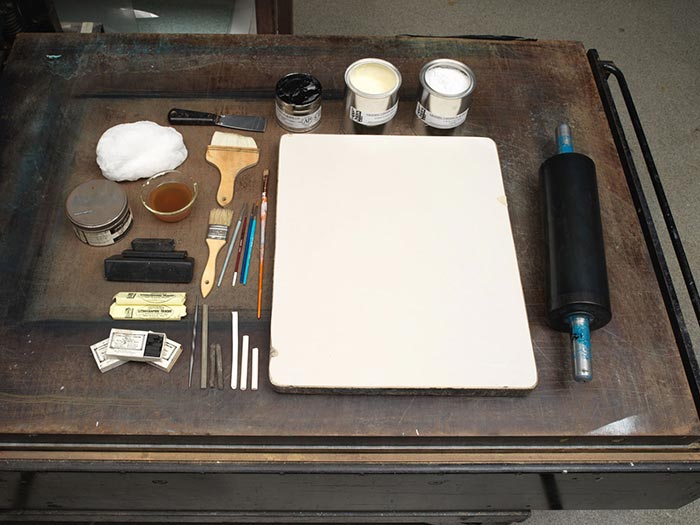The Old Barn Floor
Lithographed and published by Currier & Ives American
Not on view
This barn interior scene features a seated Black man playing the banjo and a Black boy happily dancing with upraised arms in the center of the room. At left, a white girl and the baby she holds enjoy watching the dancing boy and smiling banjo player, as does the white man standing at the barn doorway. Two horses are shown in their barn stalls; beyond, in the barnyard, are three cows, two pigs, chickens and ducks. In the background, a farmhouse appears at left, and more farm buildings and two haystacks are at the right, with a mountain in the distance.
After the end of the American Civil War in 1865 resulted in freeing enslaved Black people in the United States, Currier & Ives decided to make prints of rural life to appeal to both Southern and Northern customers. Thus, this merrymaking scene avoided reminders of the actual conditions formerly enslaved people experienced. Instead, it evokes a peaceful coexistence between white and Black farming families. Recent scholars have provided varying insights into the complexities behind such presentations.
Nathaniel Currier, whose successful New York-based lithography firm began in 1835, produced thousands of prints (most drawn on the stones by other artists) in various sizes that together create a vivid panorama of mid-to-late nineteenth century American life and its history. People eagerly acquired such lithographs featuring picturesque scenery, rural and city views, ships, railroads, portraits, hunting and fishing scenes, domestic life and numerous other subjects, as an inexpensive way to decorate their homes or business establishments. As the firm expanded, Nathaniel included his younger brother Charles in the business. In 1857, James Merritt Ives (the firm's accountant since 1852 and Charles's brother-in-law) was made a business partner; subsequently renamed Currier & Ives, the firm continued until 1907.

